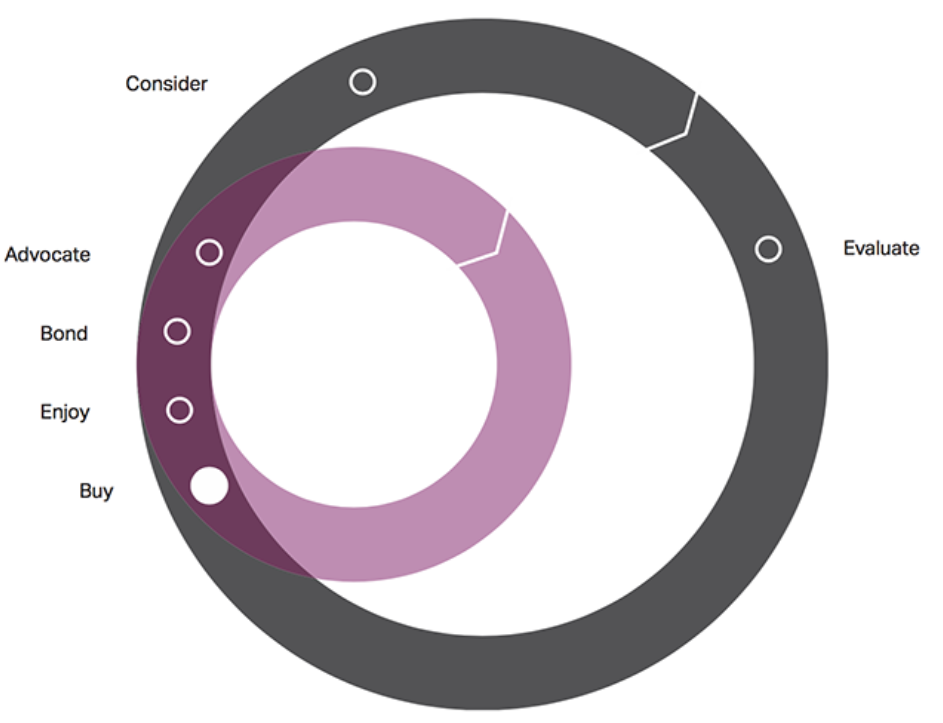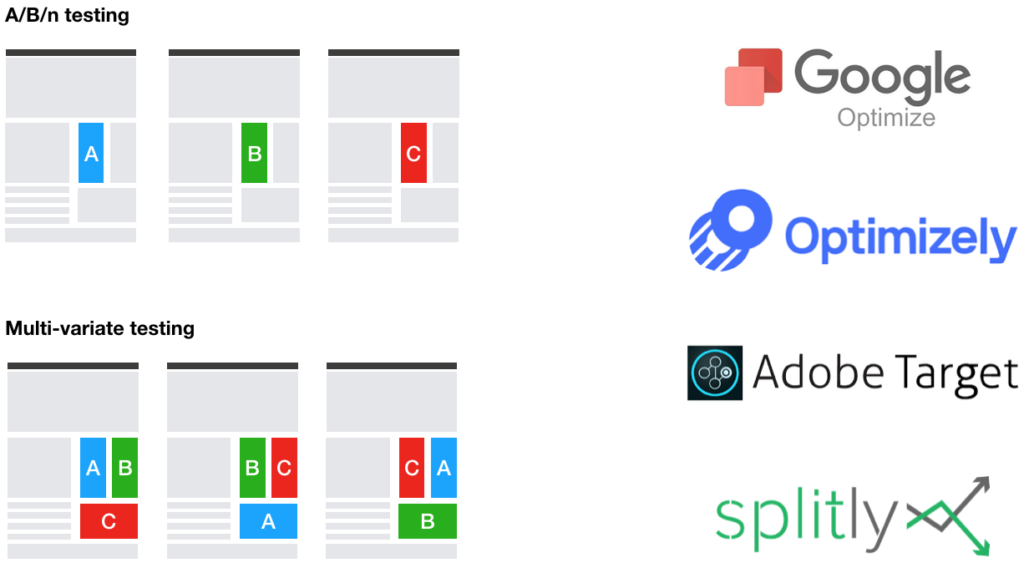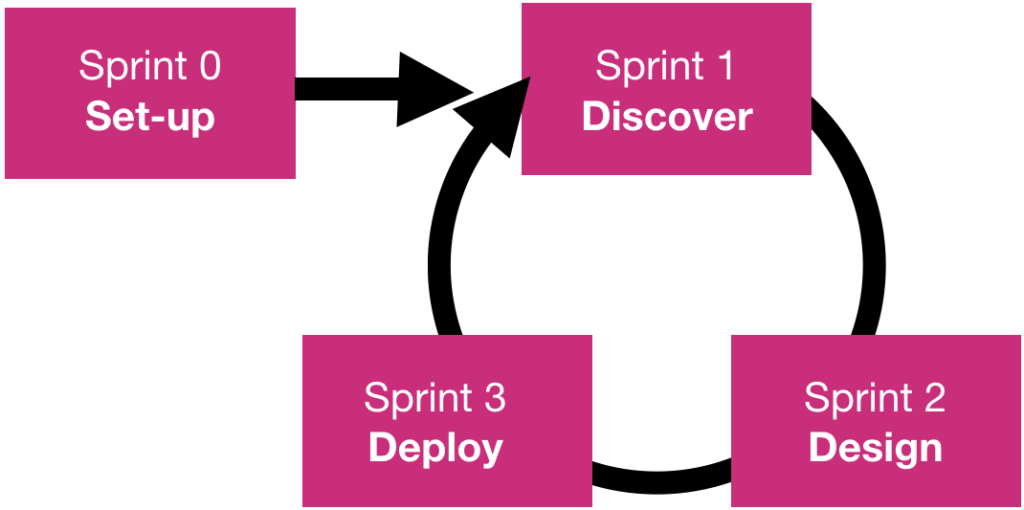The topic of conversion rate optimisation (CRO) is often murky and misunderstood.
With tools such as Google Optimize and Optimizely, it may seem easier than ever to get a head start on CRO. But with a lack of capability and backing within your organisation, you won’t create the results you need.
That’s why we’ve amassed the five essential things to know to run a successful CRO project and its importance within a successful business.
What is CRO?
So, what is conversion rate optimisation and why is it important?
CRO is most commonly defined as maximising the value of site visits.
While SEO brings more traffic to your site, CRO is concerned with making sure customers buy something once they arrive.
Whether that’s a greater number of people who buy or sign up for your product or service, or increased value of the purchase itself (e.g. adding more to the shopping basket).
But it’s not always all about sales. Sometimes your customers simply aren’t ready to buy. A purchase doesn’t tell the whole story, for example in B2B where your customers may only have one ‘purchase’ event in a long relationship with your brand.
Therefore, you should be looking to maximise different forms of engagement like shares, newsletter signups or video views. With this in mind, we prefer to define CRO as:
the process of turning customer interactions into meaningful customer interactions.
CRO applies across your complete customer decision journey. At each stage, always aim to make the interaction more meaningful. (model below)

Is CRO the same as A/B testing?
Yes and no. You can optimise without testing, but testing is often the most efficient way to work.
There are two main types of CRO test: A/B/n and Multi-variate testing (MVT).
A/B/n testing involves running whole challenger pages against each other. It’s simple and effective and usually the most popular test type.
In contrast, MVT involves testing every possible combination of content on a single page to find the best overall layout. It’s more advanced but takes longer, so isn’t always appropriate for simple tests.
You can see examples of each below.

Both MVT A/B/n tests are commonly managed using an all in one optimiser tool like those on the right of the image above. These use web scripts to identify visitors, rearrange your page on the fly for each visitor, and measure what happens to provide you with data reports and let you know when you’ve got a successful test. The ‘what you see is what you get’ nature of these tools explains their popularity among marketing teams.
Why is CRO important?
Now you know what CRO is and how it’s tested, why is it important?
CRO matters because simply increasing the amount of traffic to your landing pages won’t provide a quality return on investment if your site is poorly optimised. You can spend more and more on advertising, or optimise your page for organic traffic and it can still provide diminishing returns if your landing page is doing a bad job when they arrive.
Or, to put it another way, if you have a leaky bucket, no matter how much water you put in it, it will never be full. By optimising the traffic once it’s on your landing page, you make the most of your marketing budget.
High traffic plus meaningful interactions means optimal return on investment.
Ultimately, good CRO is about small, agile changes to make small impactful increases. Like compound interest (provided you keep optimising) your returns grow and grow over time, whereas your testing costs remain fixed.
What this means for the business is that optimising a little bit is infinitely better than not optimising at all.
The five CRO lessons you need

1. Learn, test, repeat. Don’t skip these steps. Testing takes time and money: you have to run tests and pay for changes. The smart way to work is to research first. Have a basis for your theories, then test the ones you think will work. There are a host of places you can get data from such as web analytics and user research to aid in this research. However, the most important will always be the outcome of previous tests, so use these wisely.
2. Follow a process. Wait, wasn’t point 1 a process? No, that’s the model and approach. A process is something someone else can observe, understand, follow or pick up. Our Brilliant Noise CRO process looks like this –

This is how we do it because we work in agile sprints.
Sprint 0 – setup – Get method, tools and team in place to ensure success.
Sprint 1 – Discover – Research summary and list of prioritised ideas.
Sprint 2 – Design – Choose an idea, plan the test and the execution.
Sprint 3 – Test – Run it and see if it works! Then start evaluating the results. If you’re following a process, you gain trust. Your stakeholders will trust you know what you’re doing. They’ll trust that if it goes wrong, you have a plan for that.
“Amateurs focus on tactics, while the pros follow processes.”
Peep Laja, CXL
3. Test what matters. This is how you practice strategic CRO rather than tactical CRO. To repeat a key point from before: testing isn’t free. Don’t just test every idea and hope it’ll work, or else you’ll quickly expend your budget with little to show in return.
But how do you know what tests to run with such limited time? You prioritise.
Here’s our simple prioritisation model.

It runs using a points based system. Each idea is scored against an objective framework. This is a great exercise to do in a group, bringing your team together with a shared understanding of your business framework.
First, assign a value to each goal. For example, this could be your average order value. What is each conversion worth to your business over time?
Then, work out the probability your idea will work. We do this by asking a series of questions E.g. is it above the fold? Is it affecting motivation? Is it reducing friction? Score all your ideas against these criteria and awards points.
Finally you take away points for difficult changes. Changing an image is preferable to a new eCommerce platform, for example.
Now you can sort your hypotheses by priority.
4. Focus on your users and their needs. Once you’ve decided to optimise your pages. Your next question is probably: “What does good look like? And how do I make my page better?”
Remember the learn, test model. You may be tempted to copy from your competitors, but it’s important to remember what works for them may not work for you. Learn from other sites, but don’t copy ideas wholesale.
Focus on your customers. What do they want and need? What problems are they having? How can we improve their experience with our brand? Don’t worry about what your competitors are doing. Use your learning stage to listen to your customers, and respond.
5. It’s all about the journey. Getting good at CRO means embracing uncertainty.
This can be uncomfortable for many teams. It means constantly walking a line of probabilities rather than certainties. But this doesn’t matter because failing is good! Provided you fail fast and fail well.
So why is this one of our takeaways? Because the often forgotten truth of CRO is that most tests do fail.
But that’s ok! CRO is a process of continuous learning and improvement.
If you’re doing it right, you’re always learning, and that’s generating value for your organisation constantly. So make sure you document your learnings and show your working. Share what you’ve learned regularly with your teams.
After all, the only failed test is one where you didn’t learn anything.
“A good conversion rate is one that’s better than you had yesterday.”
Peep Laja, CXL
If you would like to learn more about the techniques we’ve described above, about CRO and how it can help your business, why not get in touch below?
[hubspot type=form portal=5554216 id=09ec3759-312e-4c72-bc48-3feaa39814b3]
You can also read more about our CRO and UX offerings here.
